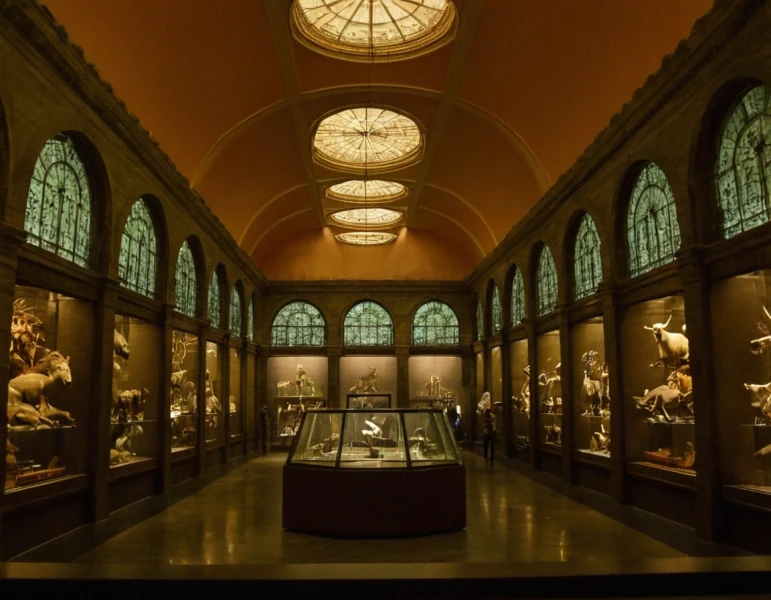Educa UNIVERSITY|SCIENCE AND ENGINEERING
National Museum of Natural Sciences of Madrid: A fascinating journey through science and history.
Related Masters
National Museum of Natural Sciences of Madrid: A fascinating journey through science and history.
Today we are going to dive into one of those places that you simply have to know if you are passionate about science, history, or simply curious about the natural world: the Museo Nacional de Ciencias Naturales de Madrid. And I'm not talking to you from theory, but from my own personal experience, because I've been lucky enough to walk its corridors numerous times and see firsthand the impact this museum can have on those who visit it.
What is the National Museum of Natural Sciences of Madrid?
Founded in 1771 by Carlos III, the museum has evolved to become a key institution for scientific research and the dissemination of natural knowledge in Spain. It is not just an exhibition space, it is an active research center that collaborates in projects as important as the excavations of the Atapuerca sites. In other words, here you can not only observe fossils, minerals and stuffed animals; real science is also being done, in real time.
The collections you can't miss
The National Museum of Natural Sciences has an incredible amount of collections ranging from the most impressive fossils to minerals and stuffed animals that leave you open-mouthed. One of the most interesting aspects is its geology collection, which houses more than 15,000 specimens, or the amphibians and reptiles collection, which has 55,000 specimens, being the best in Spain.
Also, something that has always fascinated me is the prehistory collection, with more than 21,000 pieces between lithic tools and ceramic objects. You're not just looking at old stones; you're witnessing human evolution and its interaction with the environment since its beginnings.
Want to feel like Indiana Jones? Well, the Treasures of the Amazon exhibition takes you directly to the most diverse jungle on the planet, with an impressive collection of more than 1,000 pieces. Each photograph, map or documentary immerses you further into the heart of this paradise of biodiversity.
Personal experience: A tour full of surprises
I remember my first visit, quite a few years ago now, when I was just a curious student. I went in expecting to find dusty display cases and boring posters, but what I found was an explosion of knowledge and sensations. From the moment you step into the entrance, you feel that this is a alive place, full of things to discover.
What struck me the most, and I confess it unabashedly, was the paleontology area. Seeing full-scale dinosaur skeletons was a direct trip back to my childhood, but the most fascinating thing was the explanation behind each fossil, each bone. You realize that you're not just looking at a museum piece, but a story in itself, the story of millions of years of evolution leading up to who we are today.
The importance of science outreach
Now, one might think, "Okay, it's cool to see all these bugs and rocks, but does it really have that much impact?". Well yes, and I say that with total conviction. The National Museum of Natural Sciences is not only a space for entertainment or casual learning, it is one of the most important pillars of scientific dissemination in Spain.
It is fascinating how the museum balances exposure to the general public with cutting-edge research. You are surprised when you discover that not only do they exhibit interesting objects, but the scientific staff are actively working on species conservation and fighting climate change. This museum is not static; it is always evolving, just like science itself.
Why you should visit the museum

You may be asking yourself, "Okay Ruben, I find it interesting, but why should I go?". Let me tell you why this museum should be on your list of things to do in Madrid:
- It's time travel. There aren't many places where you can jump from the dinosaur era to the Amazon jungle in a matter of minutes.
- You'll learn without even realizing it. The way the exhibits are organized makes you immerse yourself in the knowledge without feeling like you're reading a biology manual.
- It is constantly being renewed. It doesn't matter if you've already visited, there's always something new to see. Temporary exhibitions, such as "Naming Species", guarantee that every visit will be unique.
Practical tips for your visit
Before you jump in, let me give you some advice that I learned after several visits:
- Hours: The museum is open Tuesday to Sunday, from 10:00 to 17:00, and on Saturdays until 20:00. If you want to avoid the crowds, I recommend going during the week.
- Prices: The general admission is only 6 €, but if you are a student, unemployed or child between 4 and 14 years, you have a reduced rate of 3 €. Also, if you are retired or bring children under 4 years old, the entrance is free!
- Accessibility: The museum is quite accessible and well connected in Madrid. It is located at Calle José Gutiérrez Abascal, number 2, very close to Paseo de la Castellana.
Conclusion: A museum for everyone
The Museo Nacional de Ciencias Naturales de Madrid is more than just a museum. It is a space where science, history and education are intertwined in a way that will grab you from the very first moment. Whether you are passionate about science or simply curious about the world around us, you can't miss it.
Faculties
Trainings
The faculties embrace diverse academic disciplines and fields of study, opening doors to new perspectives and exploring different spheres of wisdom in a constantly evolving world.
Legal Notice • Enrollment Conditions • Privacy Policy • Cookie Policy• Copyright @ 2024 • Educa University
Powered by














